Lost Clubs: The Junior Carlton Club (1864-1977)
A unique glimpse into a long-vanished London club
Following my article locating the fictional Diogenes Club, which suggests it was modelled on the real-life Junior Carlton Club, several readers have asked for more information on this long-vanished establishment.
The Junior Carlton started its life in 1864, with temporary premises at 14 Regent Street, while the main clubhouse at 30 Pall Mall was completed in 1869. As its name suggests, it was an offshoot of the Carlton Club - Britain’s premier conservative political club, founded in an attempt for Tories to reogranise themselves in opposition to the 1832 Great Reform Act. Within five years, the Carlton had built up a lengthy waiting list; and for this reason, there were aready offshoot clubs as early as 1840, with the creation of a separate Conservative Club, which stood on St. James’s Street from 1844 until 1981, changing its name to the Bath Club when the two clubs merged.
The Junior Carlton Club as it appeared from 1869 to 1884. It would subsequently expand to encompass the buildings on the right of the picture. (Picture credit: Illustrated London News, 12 September 1868.)
Initially limited to 1,500 members, it soon raised its cap to 2,000 members. It was always intended to be larger than the Carlton - then limited to 1,200 members - with the larger membership generating the income for a more elaborate clubhouse.
My analysis of the Club’s complete candidate books - which are deposited along with its papers in the London Archives - suggest that admission in the 1860s was tightly controlled by the Conservative Party’s agents (Philip Rose and Markham Spofforth), and by its whips in the House of Commons (Lt. Col. Thomas Edward Taylor, the Hon. Gerald Noel, and Henry Whitmore). The Junior Carlton came to have a different composition to the Carlton, being the club of choice for constituency chairmen and activists, rather than the club of parliamentarians. It remained a men-only club throughout its existence.
The Junior Carlton Club’s purpose-built clubhouse occupied a rectangular site (dictated by the plot of land being made up of two back-to-back rows of houses having been demolished to make way for it), on the north side of Pall Mall and the south side of St. James’s Square. It was initially designed by Scottish architect David Brandon, who later designed the Marlborough Club’s premises further west along Pall Mall.
In 1880, the Junior Carlton Club purchased the adjoining building to the east, Adair House. Plans to add this to the main clubhouse were interrupted by an 1884 terrorist bombing by an Irish republican group, with a bomb thrown through a rear window in St. James’s Square, into the Junior Carlton’s basement kitchen. The damage necessitated a much wider rebuild, in 1885-6, to the plans of Scottish architect John Macvicar Anderson, best known for his work on Victorian banks.
The rear kitchen of the Junior Carlton Club in the aftermath of the 1884 bombing. (Picture credit: Illustrated London News, 7 June 1884.)
The resultant building, completed in 1886, expanded the Club’s internal volume by some 40%.
This colour photograph was taken in 1963, just prior to the Junior Carlton Club’s demolition. It shows the main building as it appeared from 1886-1963, though embedding the attic extension of 1930.
The below 1935 cross-section shows how the Junior Carlton Club building was further expanded in stages. In 1923, two attic floors of bedrooms were added, to the plans of W. E. Watson. And then in 1929-30, there were two major developments: the bedrooms were again redeveloped, with two further attic floors added on top; and the adjoining house at 29 Pall Mall was purchased and redeveloped into a Ladies’ Annexe, for Associate Lady Members, and the wives of (male) members. The initial attic renovation and Ladies’ Annexe was by architects Sydney Tatchell and Geoffrey Wilson. Finally, in 1936, F. J. Wills created a further redesign of the attic, embedding squash courts that were to prove very popular with members. The Ladies’ Annexe at 29 Pall Mall was then sold off in 1955, with a new Ladies’ Annexe constructed in the main building.
In 1963, struck by ruinous bills for maintenance and repairs, and partly inspired by the recent rebuild of the Army & Navy Club opposite, the Junior Carlton Club mounted an ambitious plan: the whole building was demolished, and replaced with an office block that was more economical to maintain. The Junior Carlton would occupy the upper attic floors (or “the penthouse” as they were styled), whilst generating income by leasing out the floors below, as offices. The brutalist block still stands today, and Google Street View shows it as it stands.
The former Junior Carlton Club building from 1968-1977, photographed in 2022. (Photo credit: Google Maps.)
The new building opened in 1968, but was not a hit with members. The modern decor, with its low ceilings and trendy 1960s orange-and-cyan colour scheme, clashed with the antique furniture that had been retained - including Benjamin Disraeli’s shadow cabinet table.
One of the impracticalities of the new club premises on the top two floors was that a poll of members had shown that one of their most prized assets was the squash courts. Two squash courts were duly placed at the centre - leaving little room for much else, resulting in most of the club premises taking the form of long, thin corridors wrapped around the squash courts, with low ceilings. When former Prime Minister Harold Macmillan was brought in to open the new building, he initially struggled to find something positive to say about it - before remarking, “It reminds me of a ship. But steady, steady.”
Like most other London clubs, the Junior Carlton faced significant financial problems by the 1970s, and in 1977 a merger with the Carlton Club was concluded - negotiated by Macmillan, who was then the Carlton’s Chairman. The Pall Mall building was vacated, for the Carlton’s period clubhouse on St. James’s Street, with the Junior Carlton bringing members, furniture, and artwork.
The foot of the Grand Staircase. Note the Club’s portrait of Winston Churchill over the mantelpiece, which now hangs in the Churchill Room on the ground floor of the Carlton Club.
Prior to the 1963 demolition of the Junior Carlton’s clubhouse, a series of colour photographs were taken of the interior; and they offer a vivid glimpse of this vanished world.
The Morning Room, on the principal (raised ground) floor of the Junior Carlton, overlooking Pall Mall. Note that the Royal Automobile Club’s building can be seen across the street.
The Coffee Room (dining room), on the first floor. The main floorspace was a members-only space; the arch on the distant right led to a booth, where guests could be brought in, out of sight of members.
The Parliamentary Library on the first floor. The pale blue volumes were a complete run of Hansard.
The top of the grand staircase, on the second floor. The view from the windows overlooked St. James’s Square.
The Disraeli Room, on the second floor. The Disraeli table, which he had used in opposition for convening what we would now call his ‘shadow cabinet’, is still in the possession of the Carlton Club.
A billiard room, on the second floor.
Further reading:
Anthony Lejeune, The Gentlemen's Clubs of London (London: MacDonald & Jane’s, 1979), pp. 138-141.
Barry Phelps, Power and the Party: A History of the Carlton Club, 1832–1982 London: Macmillan, 1983), pp. 34-39, 77-87.
Charles Petrie and Alistair Cooke [Lord Lexden], The Carlton Club, 1832–2007 (London: Carlton Club, 2007), pp. 191-201.
F. H. W. Sheppard (ed.), Survey of London: Volumes 29 and 30, St James Westminster, Part 1 (London: London County Council, 1960), pp. 339-345.
Seth Alexander Thévoz, Club Government: How the Early Victorian World was Ruled from London Clubs (London: I.B. Tauris/Bloomsbury, 2018), pp. 22-23, 41, 44, 62-63, 72-91, 106-107, 112, 122-123, 129, 150, 158-170, 187-189, 195, 226, 230, 234, 238-239.




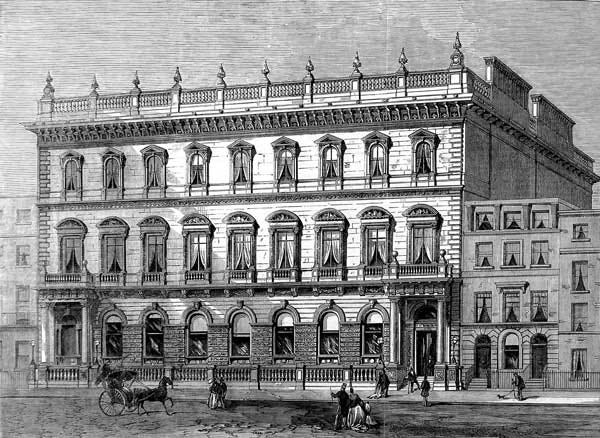

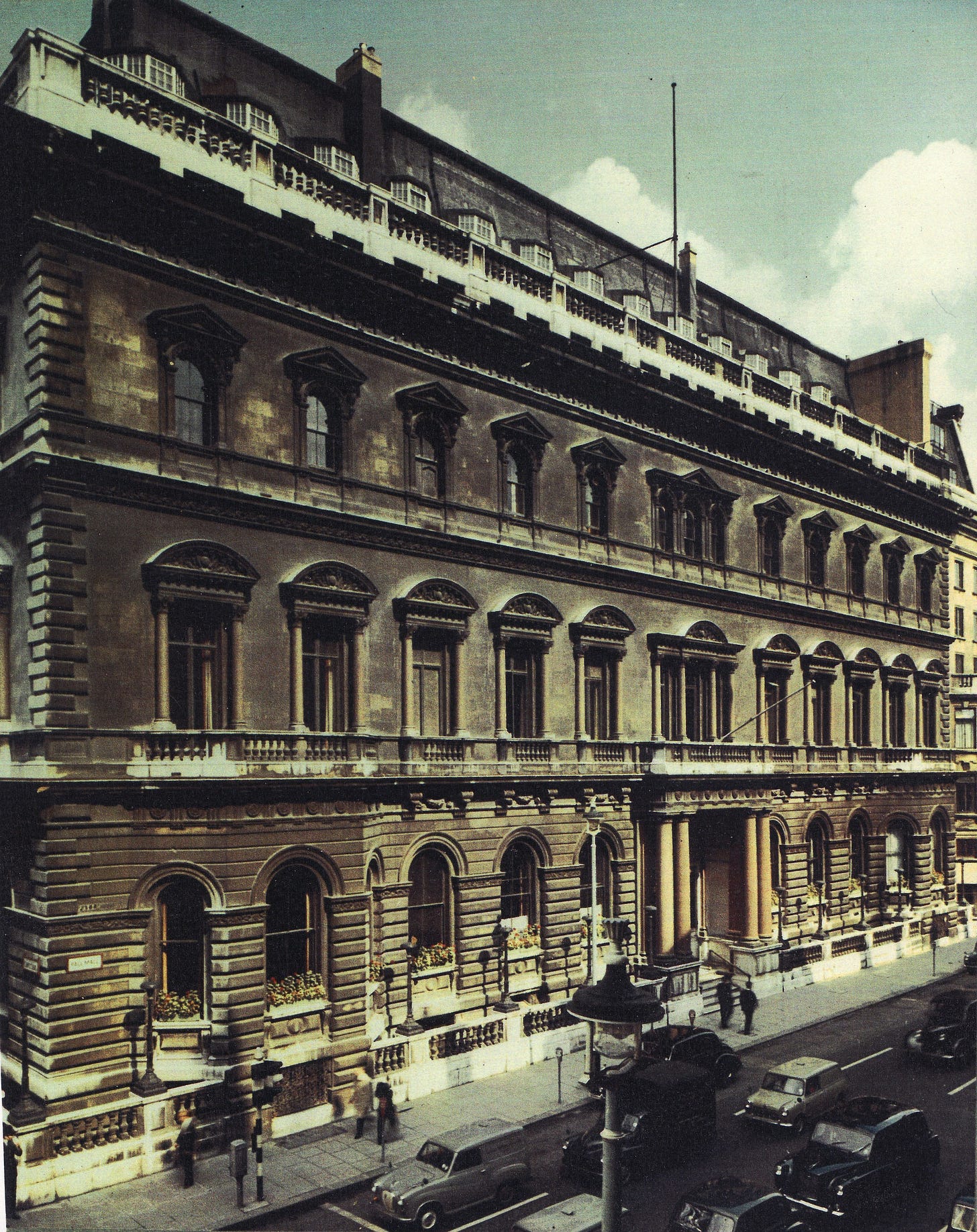

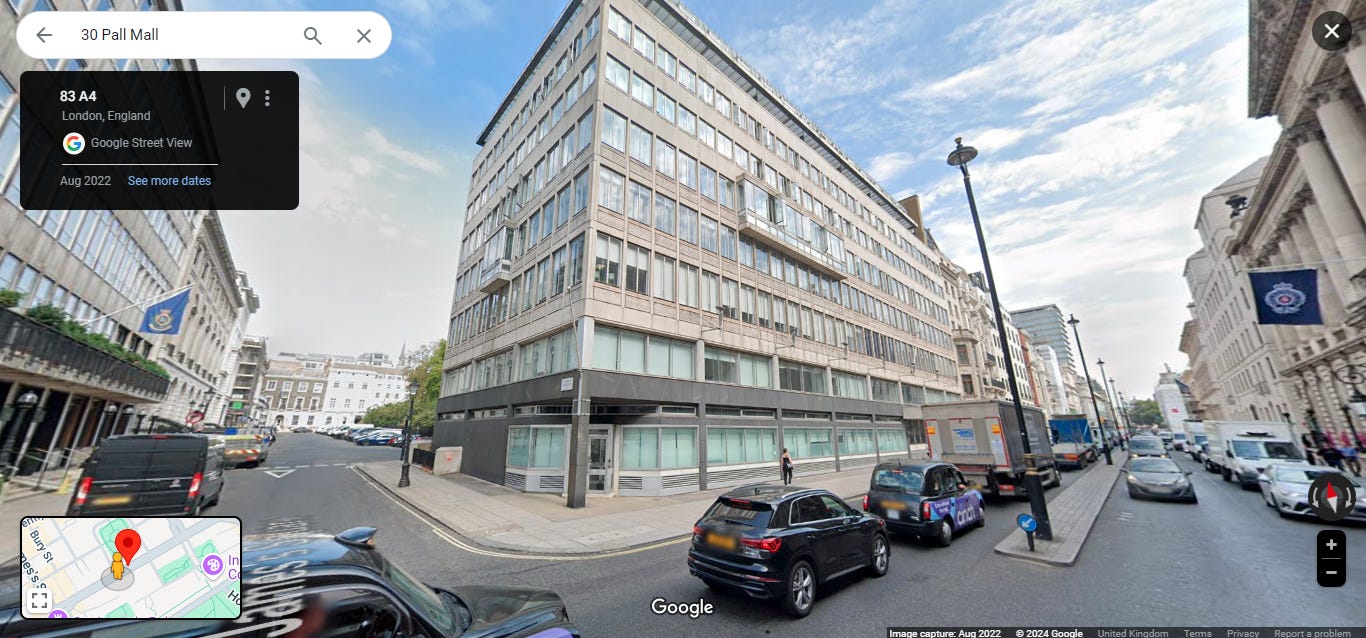

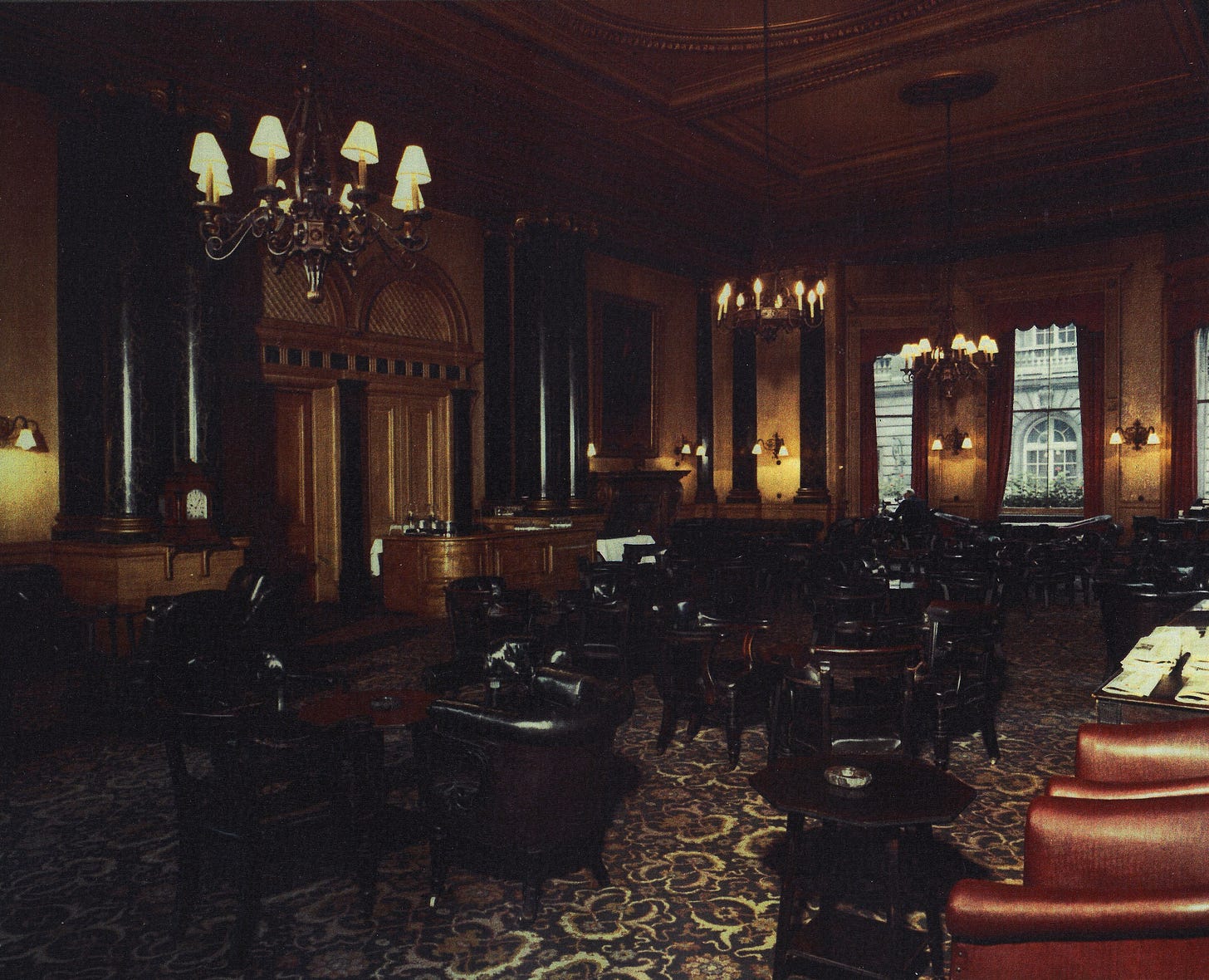
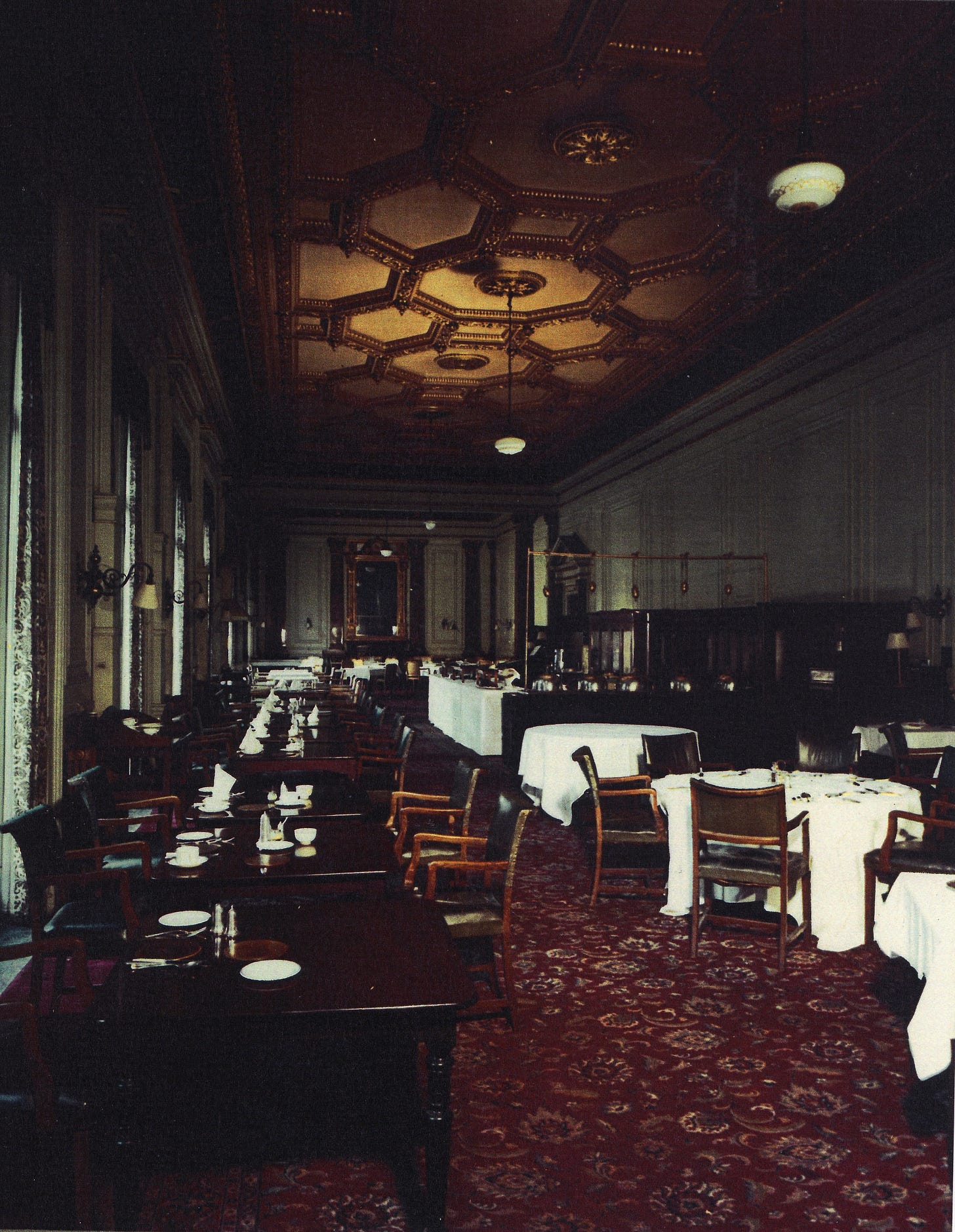
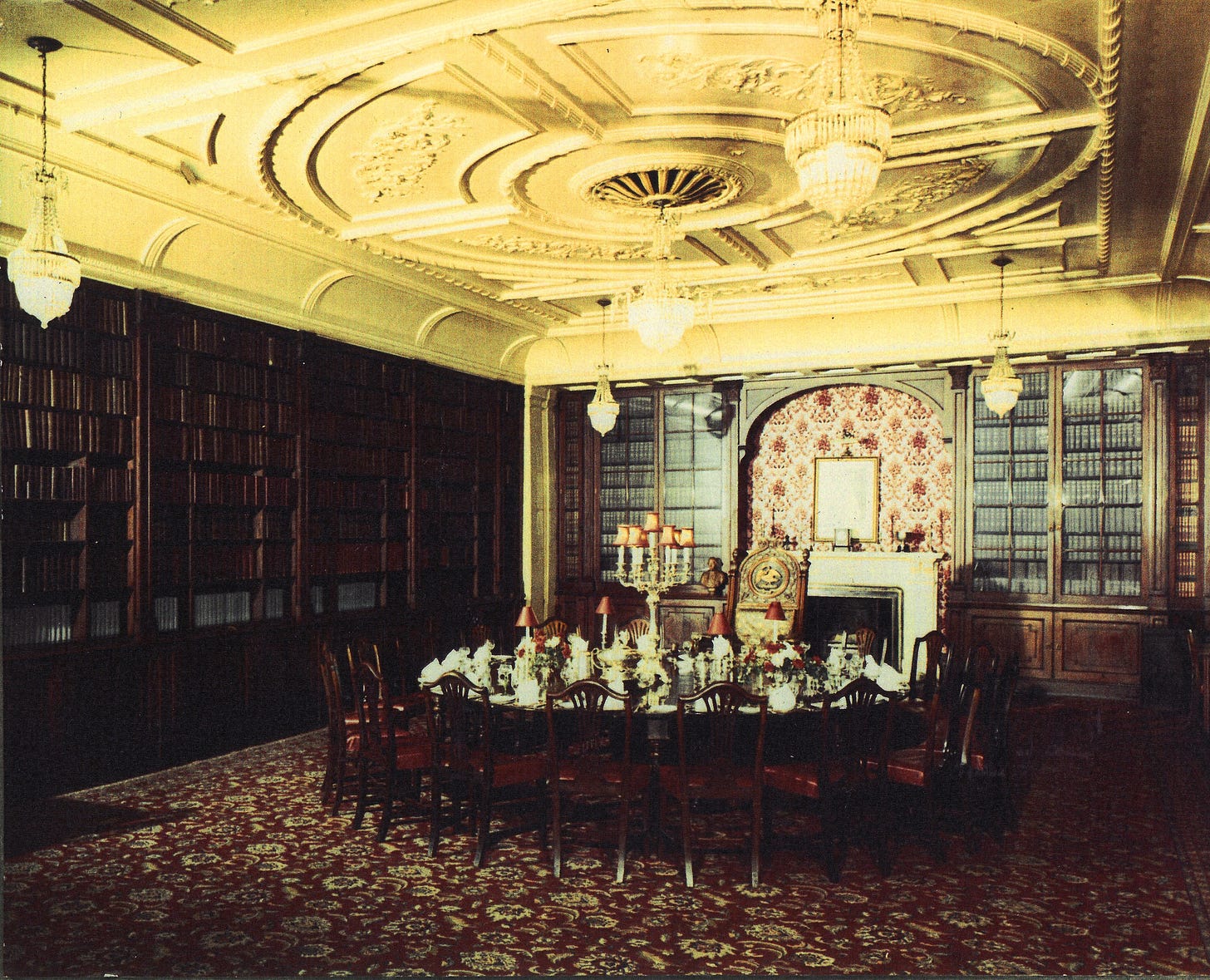
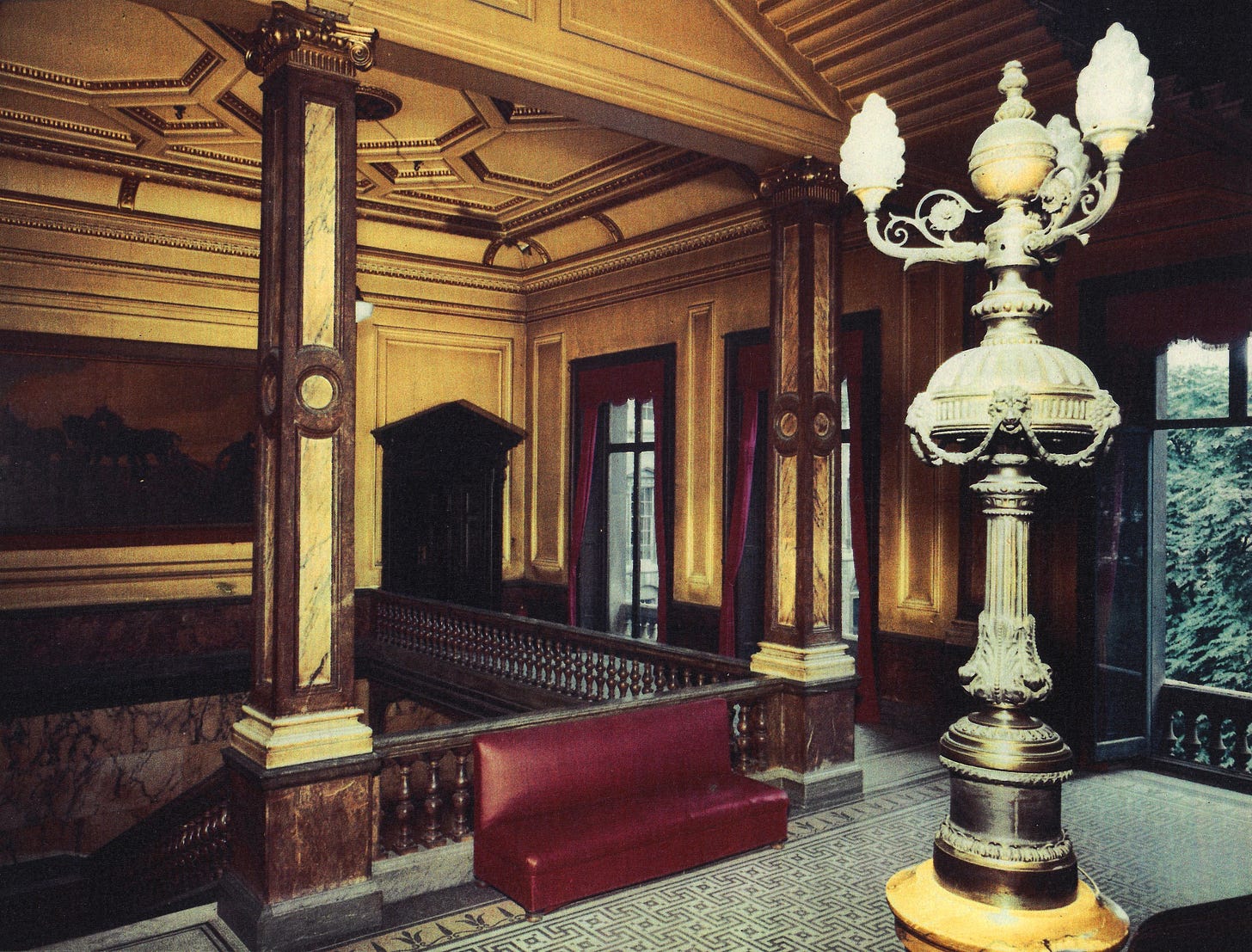



Hello there, I believe I actually work in the building which was the "Club of the Future". My desk has a nice view of the RAC across the road, but I can't say I can see any other signs of this once being a club! I've scoured the internet and found nothing, which is a shame as I am intrigued by the idea that the concept of replacing a Palladian delight with a 1960s block was inspired by my own place, the RAG. What would be lovely to see would be a brochure or guide or article about the Club of the Future....
Enjoyed this a lot. Characters in fiction (who of course I can't now bring to mind) who are described as being members of the Junior Carlton are clearly intended to be understood as Conservatives, which I hadn't really appreciated before. 'Junior' suggested to me a raffish younger-brotherish air of not behaving quite as correctly as one ought. If you'd like lists of fictional club members I could oblige. I wrote a book on Conservative / conservative writers, Conservatives Against Social Change, which is packed with clubmen.